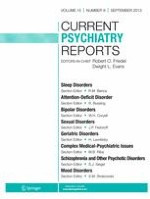01-09-2013 | Attention-Deficit Disorder (R Bussing, Section Editor)
Globalization and Cognitive Enhancement: Emerging Social and Ethical Challenges for ADHD Clinicians
Published in: Current Psychiatry Reports | Issue 9/2013
Login to get access01-09-2013 | Attention-Deficit Disorder (R Bussing, Section Editor)
Authors: Ilina Singh, Angela M. Filipe, Imre Bard, Meredith Bergey, Lauren Baker
Published in: Current Psychiatry Reports | Issue 9/2013
Login to get access